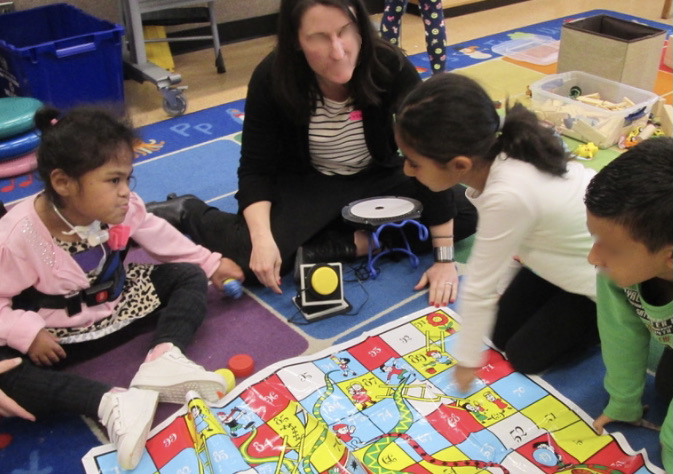Module 7: Communication
Communication and Students with Complex Needs
Communication is an intricate and complicated skill that requires a great many systems working together. Previous modules have provided information about hearing, vision, and movement disabilities. Here we explore how these disabilities can impact communication development.
Hearing
When students have a hearing loss, they will most likely have delays in language development. The fewer words a child hears or has been signed to them, the less they can connect language with the world they see and interact with. This can result in a smaller vocabulary, and it will be harder for them to make meaning of the language around them. Using other sensory input and repetition can help build vocabulary.
Vision
Students with vision impairments, such as blindness and cortical visual impairment, will not be able to “see” material presented to them visually. When a student cannot see the picture or object that is being discussed, it is challenging for them to understand the meaning of the picture or object. Greater effort will be required to assist the student to understand the full meaning of an object by using means other than visual information.
Movement

Students with physical or movement disabilities might not be able to explore their world in the ways their classmates do. The number of opportunities they’ve had to try things like turning on a light or reaching for a book is also less than their peers. Teaching concepts like turn, climb, or pick will require other than physical means to have the student understand the meaning. Providing more opportunities delivered in a variety of ways will help to reinforce their understanding of the world around them.
Other aspects of a student’s physical and cognitive make up can also impact their ability to learn language. Students who have muscle spasticity or dyskinetic movement will be more limited in their ability to make all the small, co-ordinated muscle movements needed for speech. Remember that over 100 muscles work together to produce speech sounds. If the brain and muscles have difficulty with co-ordination, this will be a much harder task.
Brain Function
Similarly, students with complex needs may have difficulties with attention, processing speed, or memory. All of these are higher level brain functions that help with the storing and retrieval of language. If a child has difficulty with attention, they can miss out on much of the verbal language. If processing speed is slower or memory is impacted, they may need more opportunities to hear a word in order to learn it. In a world where we expect children to simply absorb language from the environment around them without direct teaching, students with complex needs will need direct teaching, support, repetition, and more opportunities than their classmates.

- Think about the students you work with—in what ways do they communicate?
- What kinds of responses do they get from others?
- How does a student with complex needs communicate their message?
- What kinds of responses do these students get from others?